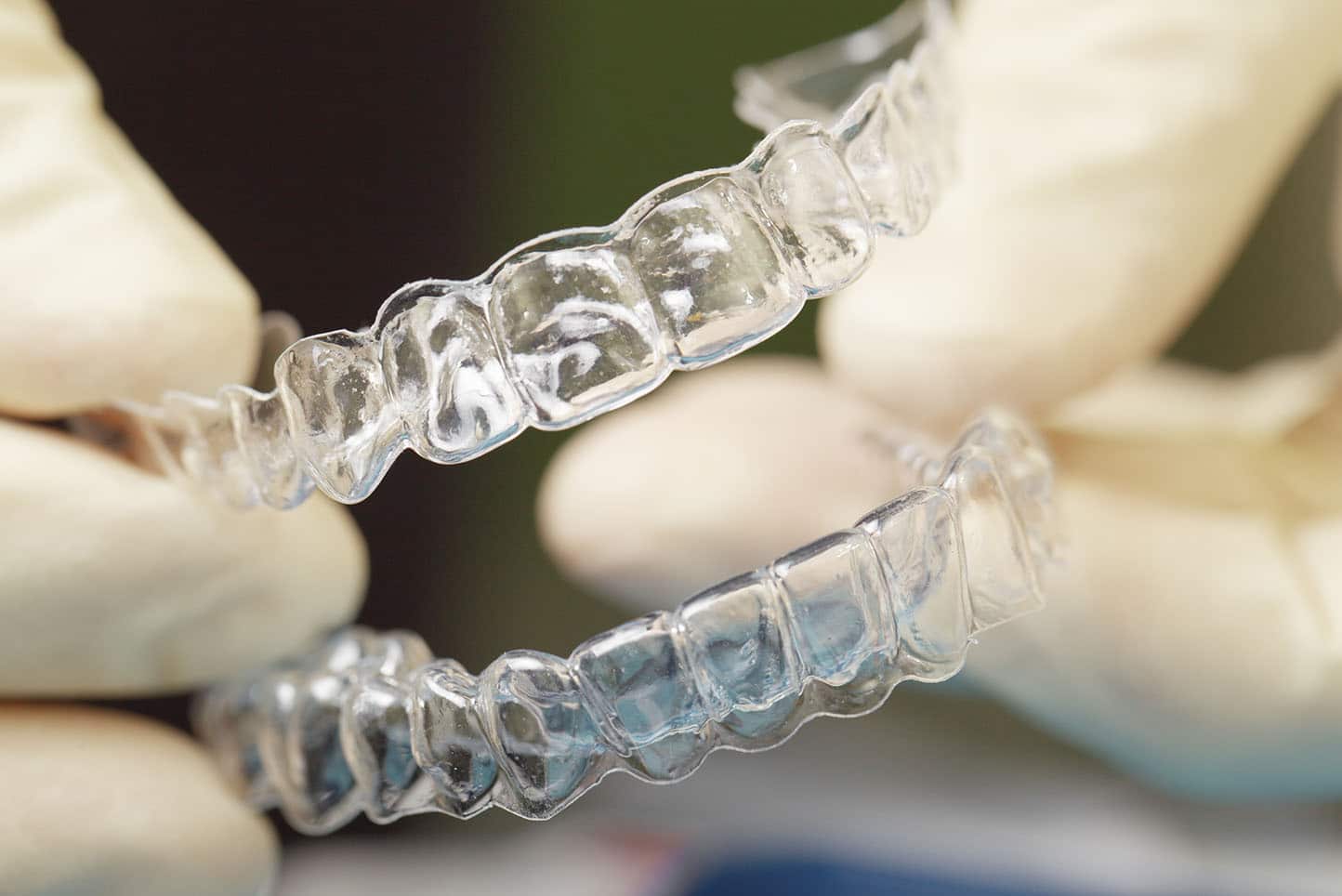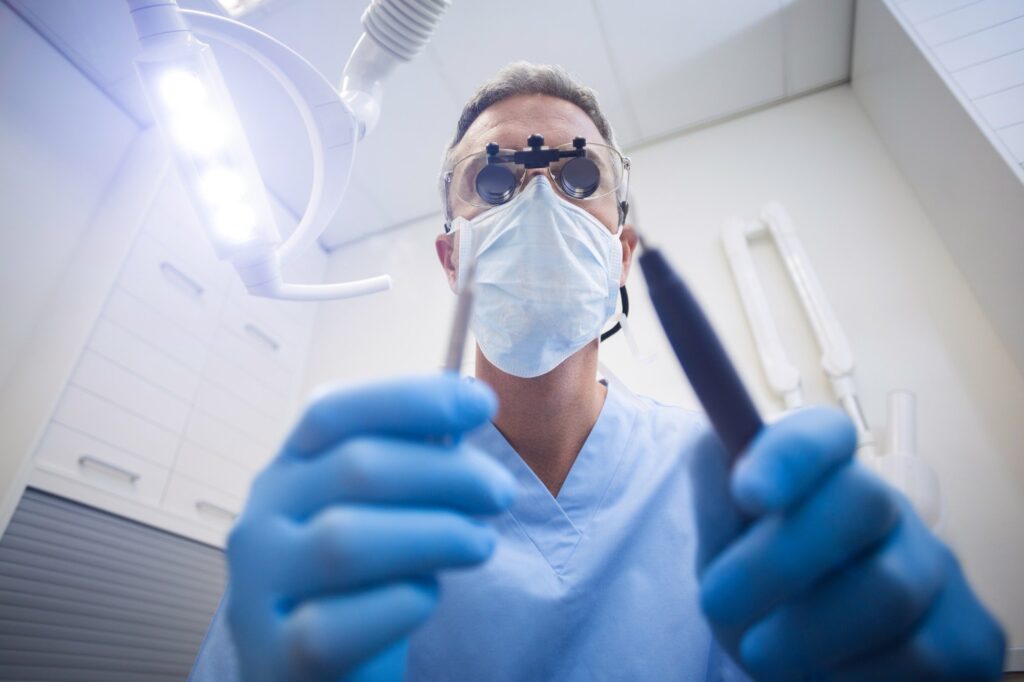Regarding orthodontic treatment, one common question is, “Does Invisalign hurt?” The journey to a perfect smile with aligner trays may involve some discomfort, but understanding the nature of this discomfort and learning how to manage it can make the experience more bearable.
This article will explore the different aspects of Invisalign-related discomfort, from its reasons to practical tips for alleviating pain or soreness.
What Is Invisalign?
Invisalign is an orthodontic treatment involving wearing clear, plastic aligners to shift your teeth into their correct positions gradually. The Invisalign system uses 3D computer imaging to design and manufacture custom-made aligners for each patient. These aligners are virtually invisible, comfortable to wear, and easy to remove for eating, brushing, and flossing.
The aligners are replaced every two weeks with a new set that continues the teeth straightening process. Invisalign is a popular alternative to traditional metal braces for adults and teenagers seeking a discreet solution to improve their smile.
Why Does Invisalign Hurt?
Invisalign aligners work by slowly shifting your teeth into their correct positions. This involves a certain amount of pressure being exerted on the teeth, which can cause discomfort or pain, especially after starting a new set of aligners.
The sensation is often described as a feeling of pressure rather than outright pain. Invisalign is generally less painful than traditional braces, but everyone’s pain tolerance differs. It is also important to note that the pain tends to subside after a few days as your mouth adjusts to the aligners.
What Causes Pain With Invisalign?
- Teeth Movement. The Invisalign braces apply consistent pressure on your teeth, causing them to move into their desired position gradually. This continuous shifting is the primary cause of discomfort and pain, especially during the early days of treatment.
- New Aligners. Each new set of Invisalign trays is designed to bring your teeth closer to their final position. Each aligner is designed to move your teeth, so it may cause discomfort or pain for a few days after it is first worn.
- Mouth and Gum Irritation. While Invisalign aligners are made of smooth and transparent plastic, they may still irritate the mouth and gums, especially during the first days of wearing a new set. This is usually temporary, and over-the-counter remedies can help soothe the irritation.
- Tooth Sensitivity. You may experience increased tooth sensitivity, especially to hot or cold food and beverages, as your teeth shift and move into their new positions. This sensitivity typically eases over time.
- Pressure Points. In some cases, Invisalign might create intense concentration on certain pressure points within the mouth. This can cause pain and affect your normal eating, speaking, and other orally-related routines.
- Improper Usage. Failing to follow the proper usage instructions can lead to pain. If you wear your aligners for less than 20-22 hours a day, your teeth can return to their old position. The pain comes when you put the aligners back in, and they have to recorrect your teeth’s position.
- Not Cleaning Aligners Regularly. Neglecting to clean your aligners may lead to increased bacteria in the mouth. This can cause infection, tooth decay, and pain in the teeth, mouth, and gums.
How Long Does Invisalign Hurt?
The duration of discomfort associated with Invisalign varies from person to person. While some individuals may experience mild discomfort for just a couple of days when transitioning to a new set of aligners, others may feel the effects for an extended period. Understanding that this discomfort is often temporary can help individuals navigate the initial phases of their treatment with greater ease.
5 Effective Tips for Managing Invisalign Pain
While experiencing some pain is normal, “unnecessary pain” isn’t. A few simple strategies can help you manage this discomfort effectively.
1. Switch to New Aligners Before Bed
Changing to a new set of aligners can initially cause slight discomfort as your teeth adjust to the shift in alignment. By making this change right before you sleep at night, your mouth will undergo a substantial part of the adjustment period while resting. This way, you’ll sleep through the initial discomfort phase, waking you up feeling more accustomed to the new aligner.
2. Eating Soft Foods
During the first few days of shifting to a new aligner, your gums and teeth might be slightly sensitive, making consuming hard or chewy foods difficult. Replacing them with soft foods will be easier on your teeth and gums, reducing the chance of irritating the sensitive areas. Foods such as mashed potatoes, pasta, eggs, or yogurt will ensure your gum health while satisfying nutritional needs.
3. Ice Cold Relief
A cold water rinse or sucking on ice cubes is an age-old, popularly recommended natural remedy for toothaches and gum inflammation. This strategy works to numb the nerves, leading to quick, if temporary, pain relief. If the pain spans a larger area, holding an ice pack to your cheek adjacent to the painful spot can help. One thing to consider is to beware of extreme temperatures if you have sensitive teeth, as it might worsen the discomfort.
4. Over-the-Counter Medication
Over-the-counter pain relievers such as ibuprofen or paracetamol can temporarily relieve the mild discomfort of new aligners. However, it’s valuable to note that these medications should not be used as a long-term solution and infrequently, following the instructions provided by your doctor or the package insert. Excessive use may lead to other health complications.
5. Topical Painkillers
Oral gels or ointments containing topical analgesics can be directly applied to the gums for quick relief from discomfort or inflammation. These can be particularly useful for discomfort that is harder to reach, like nerve pain. While these provide immediate and targeted relief, they are meant for short-term use and should not replace a consultation with your orthodontist if the pain persists.
Is It Worth The Discomfort?
Yes, Invisalign is often worth the discomfort for many patients. Instead of dealing with conventional metal braces, Invisalign offers a more aesthetically pleasing option for teeth straightening. The discomfort associated with Invisalign is usually less than that of traditional braces, and the overall treatment time is often reduced.
Additionally, Invisalign trays are removable, allowing for easier eating and cleaning. Therefore, despite some possible discomfort, the benefits of Invisalign can greatly outweigh the drawbacks for those wanting to improve their smile.
Get On the Road to a Stunning, Pain-Free Smile: Schedule Your Invisalign Consultation Now
The road to a perfect smile involves navigating a few bumps of discomfort. However, with the correct information and pain management strategies, these bumps prove to be less daunting. So, does Invisalign hurt? Yes, it may. But with the attainment of a well-aligned, beautiful smile, it’s all worth it in the end.
Ready to start your journey to a dazzling smile with minimal discomfort? Contact us now and let us help you embrace this transformative experience—a pain-free, stunning smile is just a good decision away.
Frequently Asked Question
Does Invisalign cause pain, and how can I manage it?
Invisalign can cause some discomfort or pain due to the pressure exerted on the teeth to gradually shift them into the correct positions. This sensation is often described as pressure rather than pain. To manage this discomfort, you can try switching to new aligners before bed, eating soft foods, using ice cold relief, and taking over-the-counter medication if necessary.
How long does the discomfort from Invisalign last?
The discomfort from Invisalign is usually most noticeable when you start wearing a new set of aligners. However, this discomfort typically subsides within a few days as your mouth adjusts to the new aligners. If the pain persists, consult with your orthodontist for further guidance.
What are some effective tips for managing pain caused by Invisalign?
To effectively manage pain caused by Invisalign, consider these tips: switch to new aligners before bed to sleep through initial discomfort, consume soft foods to minimize pressure on your teeth, use ice cold relief to numb pain, and take over-the-counter pain medication if needed. These strategies can help alleviate discomfort and make the Invisalign experience more comfortable.


